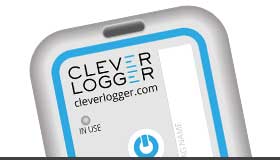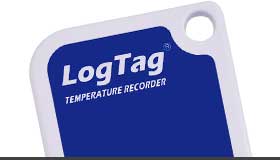Using temperature loggers when transporting fresh basil
The temperature joys of transporting basil
Today I had a question about the use of temperature loggers with the transport of fresh basil. The problem was in regards to the receiver rejecting shipments because the basil was out of the required temperature range (8° to 14°C). The temperature logger needed to either demonstrate that the basil was within range, or try to identify when and how often it was out of range.
The temperature joys of transporting any item
This is a common problem for anyone shipping temperature sensitive goods. When you are shipping directly to the customer they are in control of accepting and rejecting the shipment. If they reject it, then you have a battle with either the customer or the transport company. So how can you demonstrate that the goods are fit for delivery, or if they aren’t, that the transport company has failed to provide the required service?
Temperature loggers when transporting
The answer is obvious “with a temperature logger” and there are other blogs explaining the benefits of temperature loggers when transporting anything.
The next big question is then “which temperature logger?” and it is this question that I want to look at in more detail.
We have a wide range of loggers and often there is no practical difference between them for many customers. In this case, however, there are two questions that quickly point to the “best” solution.
Question 1 – what do you want the receiver to know?
There are a couple of possible answers for this, and it will point you to a specific brand or model of temperature logger.
- Nothing – In this case I would recommend the thermocron range
- If it is currently within range – the logtag range (www.logtag.com.au) will have the green/red flashing LED or display the current temperature. When setting up the alarm options, have it flash green when it returns within the temperature range.
- If it has been outside the limits – the logtag range (www.logtag.com.au) have the alarm option to stay flashing red even after it returns to normal.
- Everything – that is, you want the customer to have access to all the results. While it is possible to have the customer buy the reader/software for thermocrons or logtags, a better option may be to use the Temsen temperature loggers (tempsen.com.au). These units have an optional built-in pdf report and the receiver just has to plug it into a PC or Mac and they will see a drive with the document in it.
Question 2 – where do you want to place the logger?
The reality is that the thermocron, logtag and tempsen loggers are all reasonably small and can be placed almost anywhere.
The thermocron is significantly smaller than the other two, and since it is stainless steel it will be water resistant. The lack of indicators, however, is likely to rule it out for this application.
Both Logtag and Tempsen have the option for an external probe. This means that the logger can sit on the outside of the box and the probe go through a hole and be placed where ever it is required. Probes are water proof and can be placed anywhere.
The practicalities of “where”
One simple answer is “where the customer will test it”.
But since there is likely to be a significant variation in temperature it is worthwhile actually doing a single run with a number of loggers in the one box. This will provide an insight into the temperature variation within the box. If there isn’t much of a variation then the choice as to where to place it is immaterial, and it can go in the most convenient location.





